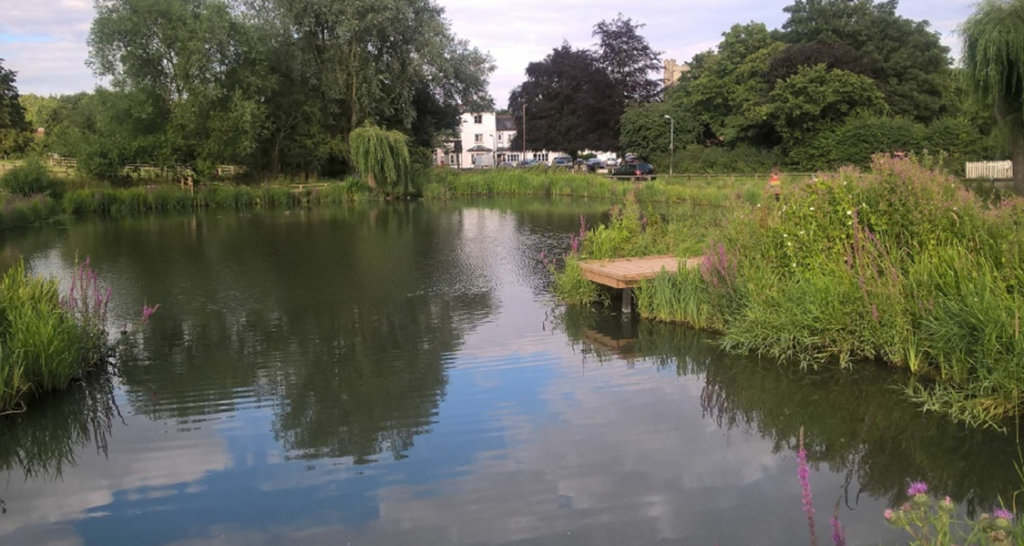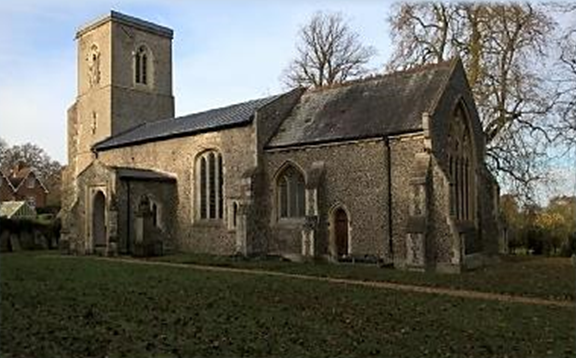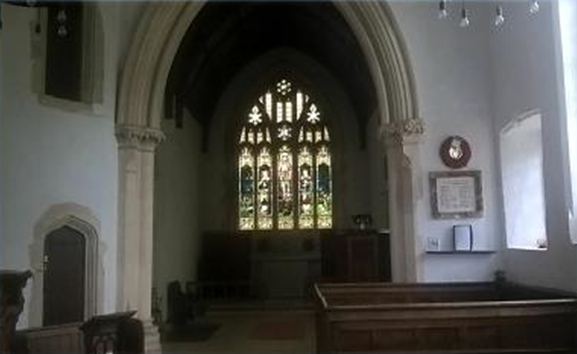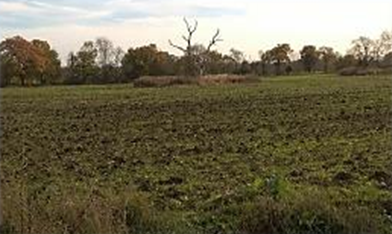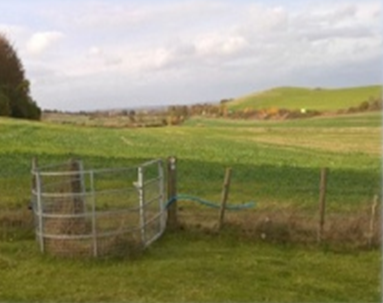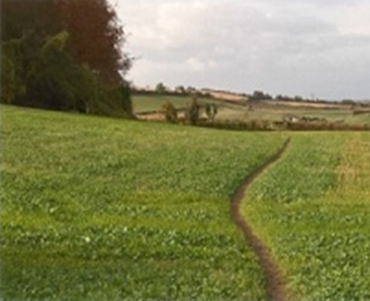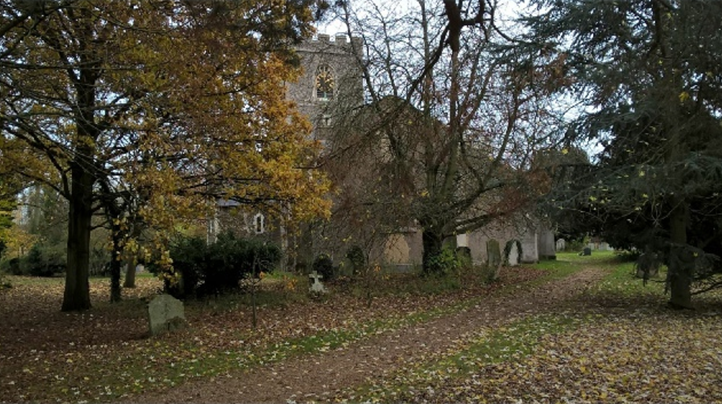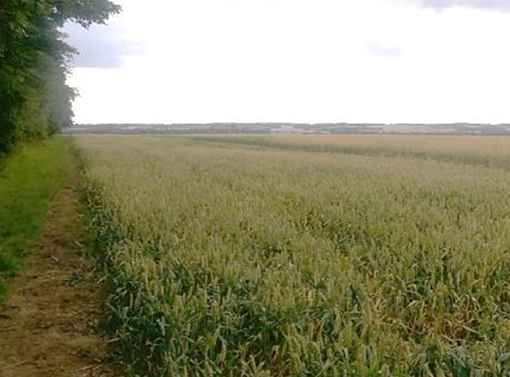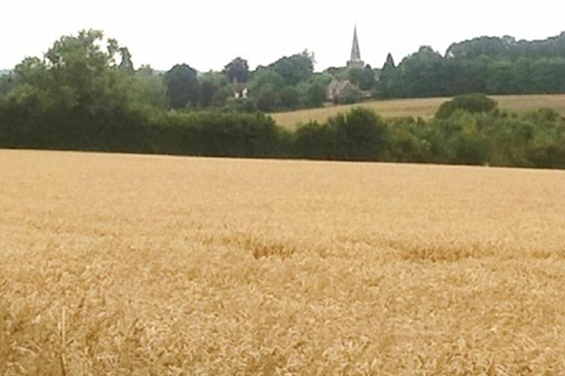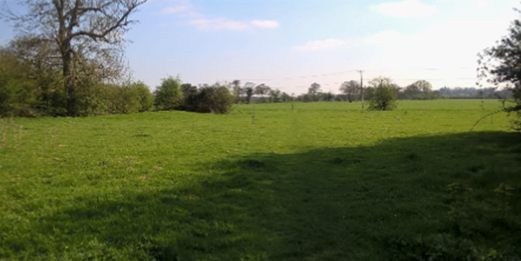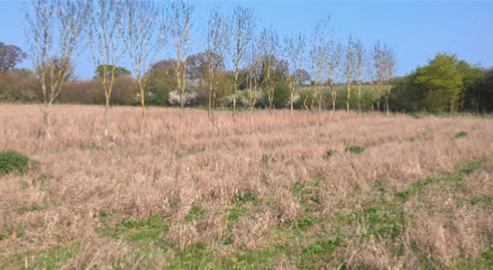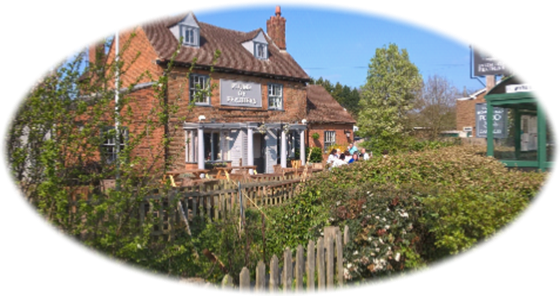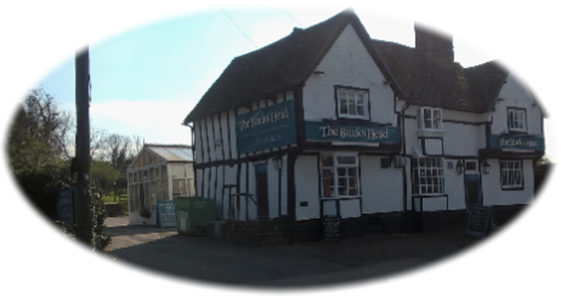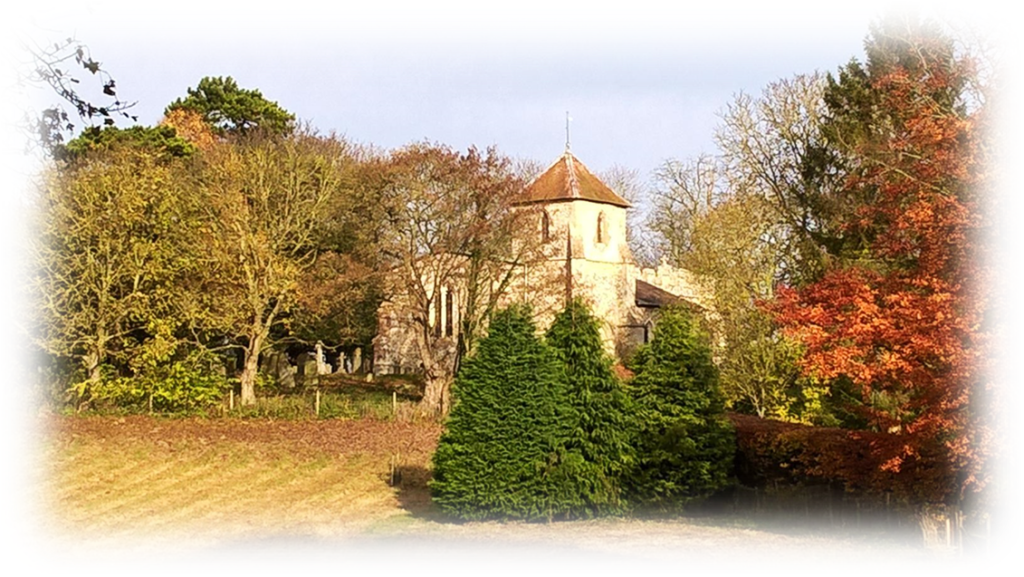
Distance: 12.2 miles
Start/finish: The hamlet of Wallington. Where the road bends right (approaching the settlement from the A505) continue on into The Street. There is a small free car park 50 yards on the left. Finish in the village of Little Wymondley where there is ample street parking (Tower Close en route to the recreation ground, for example).
Map: Ordnance Survey Explorer map 193
Public transport: There is no bus service to or from Wallington and certainly no rail stations anywhere near. At Little Wymondley there is the 80 bus service linking Hitchin and Stevenage (Centrebus (South)) and the 101 Sapphire-Luton-Stevenage (Arriva Herts and Essex).
It doesn’t have a station although the village is only just over two miles from Hitchin.
Pubs/refreshments
Please make sure you check with the pubs for opening times.
LEG 2 ROUTE CHANGE.
For whatever reason the FoHW have changed the destination from Willian to Little Wymondley (as laid out in the latest edition of the official guidebook. The second edition, therefore, is incorrect). However, there is no reason why you shouldn’t continue walking down the track into Willian when the route splits left towards Great/Little Wymondley. If only to visit its beautiful pond. It’s not a massive detour and the Mercure Letchworth Hall Hotel is just outside the village if you wanted an overnight stay.
Willian is only two and a half miles from Letchworth Garden City station (Great Northern runs trains from King’s Cross to Cambridge) and there are numerous bus services. There is a local service which supposedly stops opposite The Fox Inn in Willian (no timetable available at the time of writing) but check ruthlessly beforehand.
Route description: If you seek solitude, peace and enjoy large tracts of cultivated farmland you’ll thoroughly enjoy this leg. Easily followed footpaths cross well-ordered fields and follow lonely woodland tracks. Apart from Weston and Graveley and the small village of Clothall you’ll encounter few – if any – people save the energetic dog walker. Birdsong will accompany you all the way. It’s a simple unencumbered relaxing trek passing some ancient churches and often dipping into the folds of the gently undulating landscape. It is well signposted and you’ll have no trouble counting off the miles. It is this leg that convinced me that the official flag for Hertfordshire – and there is one combining blue waves representing rivers, yellow symbolically representing Alban the saint and an image of a hart – could be simplified by using the two colours green and yellow. They are the dominant colours which characterise the landscape, at least in summer. As you walk resolutely south-west from Wallington on a network of meandering footpaths there is a bucolic modesty about the gentle and unfussy landscape. Hertfordshire never shouts “Look at me!” It quietly introduces itself mile after ever changing mile.
Remember. “Four legs good. Two legs better.” Useful if you are walking the Hertfordshire Way!!!
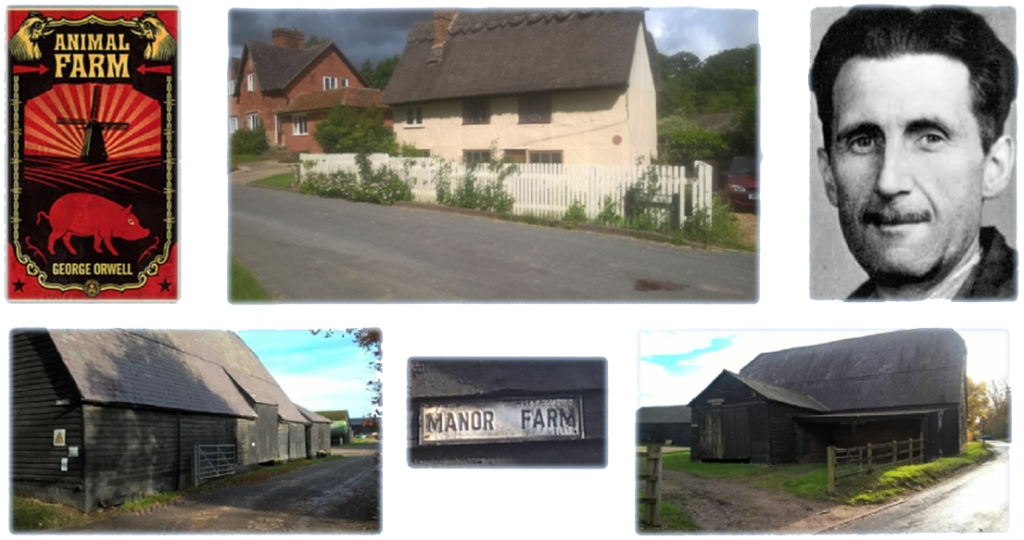
Orwell married Eileen O’Shaughnessy at Wallington’s St Mary’s Church in a simple ceremony in June 1936 and that’s where the trail makes for first. From The Stores walk 50 yards up Kits Lane to some steps and a tight opening into the trees on the left hand side opposite numbers 14/16. It can be easy to miss. When I tackled this leg the footpath ahead could only have been revealed with a machete, combine harvester or flame thrower. Take a detour right through a field to the Grade II listed church which has stood in different guises for 900 years. However, I discovered a proper Hertfordshire Way roadside sign just up the hill, past Manor Farm which takes you to St Mary’s. An acceptable alternative.
The first mention of the church (pictured below) was in 1190 when Robert of Wallington gave the building and land to the monks of St Alban’s Abbey. The porch, tower and north aisle, including the chantry chapel, were added in the 15th century, further work was carried out in the 18th century, the present chancel was rebuilt in 1864 and repairs to the fabric of St Mary’s continually made throughout the 1900s. One notable feature is the four carved angels at the base of the main timber beams in the north aisle, comparatively rare in Hertfordshire.
Leave by the church gate and, at an unwholesome looking pond opposite, turn right onto the road and follow it as it bends left, (at this point there is an unbroken view over the countryside towards Baldock (below left) to become a wide and easily followed track skirting fields. Walk for five or six minutes until a sign directs you right, over a small wooden bridge to emerge in a large field – with a distinctive ‘island’ of trees (below right) – and a perimeter path stretching ahead alongside trees towards a wood (bottom centre). When I retraced my steps on a beautiful autumn morning I discovered, exposed by the missing foliage, a viewing platform stuck fifteen feet up a tree (bottom left) and accessed by a metal ladder. So what creatures are normally under surveillance? My guess is deer, rare raptors or, maybe, okapi! Or perhaps groups of knock-kneed garishly clad ramblers muttering darkly that they face another 11 miles before journey’s end and why didn’t they relax in the sun in a garden chair. Well you wanted to do it. So keep moving.

Leave the field, cross a foot bridge and follow the path through the wood until you appear on the left of Clothallbury Wood. Continue on an obvious track all the way to the A507. Here was a rarity. A Hertfordshire Way sign pointing in a misleading direction encouraging walkers to cross the road and head straight across the field opposite (below left). In fact the official route heads off obliquely right mirroring the line of a series of telegraph poles (below right). When I crossed the field in the summer the path was hard to pick out. In autumn it was completely indistinct. But once you’re confident you are heading in the correct direction aim for the far hedge and when you reach it turn left and find a series of wooden steps on your right leading down to a road and the quiet village of Clothall.
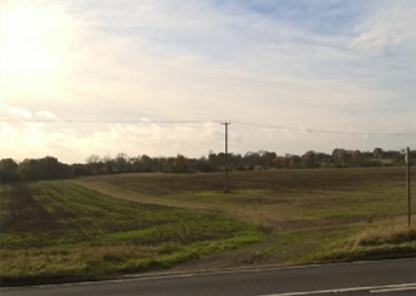
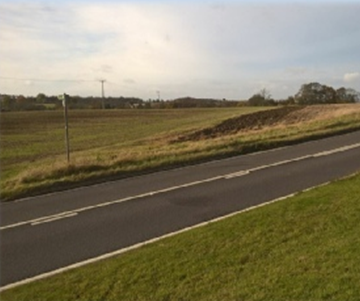
Turn left along the road and follow it as it passes some impressive houses and rises to a bend. On the right is a gate which drops down an easy to follow track with the photogenic 14th century flint and stone St Mary the Virgin on the eastern chalk slopes of Hickman’s Hill on your right (below left). Another gate leads you into a grassy area with an unmistakeable metal gate in front of you with a Hertfordshire Way roundel. (below centre). But the clearly delineated route ahead (below right) actually starts in front of another gate so walk the few yards right to that.
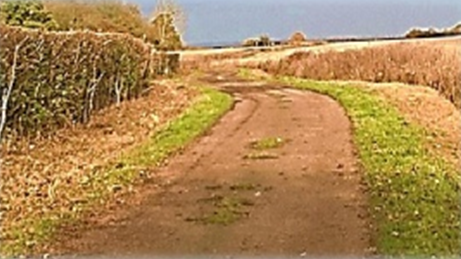
Follow the path towards the distinctive collections of farm buildings ahead. On reaching Welbury Farm turn left, go through the farmyard, aim for a gate in the adjacent field, turn sharp left and begin a mile long walk between the Weston Hills on your right and Newfield Hill on your left. The path skirts woods on the left and then the right before passing wooded Green Grove and then turning right on what is now a wide, well-worn track (right). It was on this somewhat dull stretch that I encountered two women walking their dogs – the only people I met on the official route all day. When the track runs out at a sharp bend in a road turn left, cross over and locate a path to the left of Bushwood House.
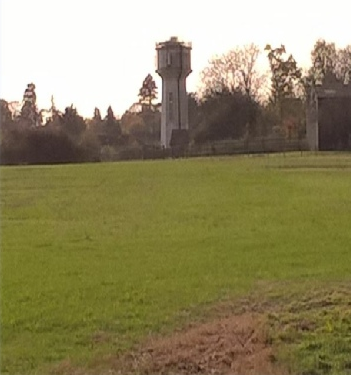
Go through a gate into a narrow path –both times I’ve been there it has been overgrown – rubbing shoulders with Bushwood House’s less than private garden, including what felt to be its back lawn (how irritating it must be to have ramblers gawping at your barbecue party or admiring the contents of your greenhouse. The residents must get really cheesed off). Continue forward with a hedge on your right. Across the fields is the landmark Weston water tower (see left). Where the field ends march on across cultivated land heading towards the far right hand corner where there’s a gap in the hedge line. It’s probably easier to skirt the tree line on your left after crossing the field and then right to reach the gap. It’s your choice. Entering a field with a large tree in its centre walk diagonally right where the land drops down to some steps on to Maiden Street. Turn right and after 30 yards a sign on the left next to a lamp post directs you towards a wooden fence and a private drive. However if you want to visit the fleshpots of Weston, which has two pubs and a post office/grocery store, continue along Maiden Road for 10 minutes until you reach the village green with its pond (below).
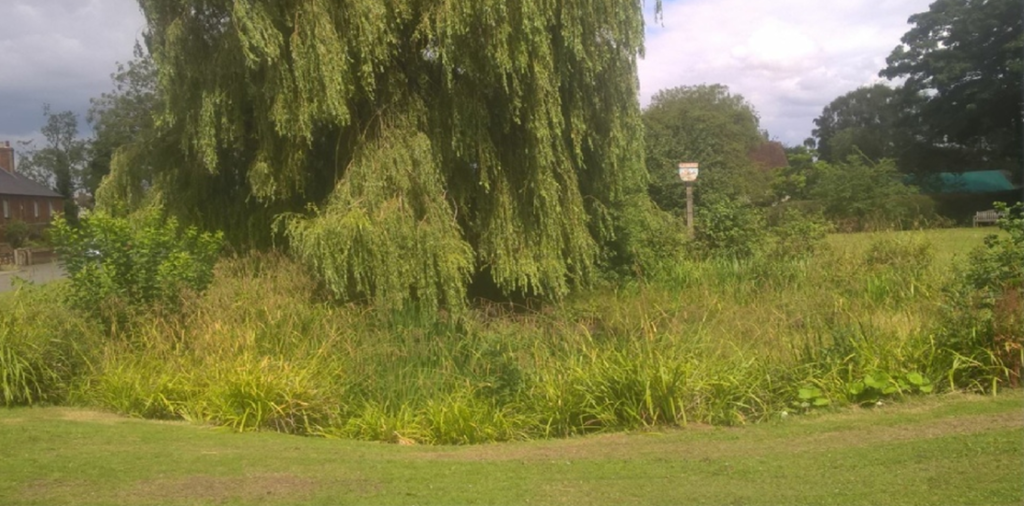
Although much of the walking so far gives the impression of crossing unchanging and undulating farmland with little sense of height gained the centre of Weston is at 484 feet. On arrival you’ll discover a fine example of one of the characteristic quirks of village life – the historic sign. In Weston’s case standing alongside the pond on the green. Signs, a particular feature of villages in southern England and East Anglia, often depict some symbolic historical or cultural event – or intriguing folklore – relating to the village. The myth of Jack O’Legs, a towering Robin Hood style rogue – Hertfordshire’s own Errol Flynn without Olivia de Havilland as a distraction obviously – who robbed the rich traders of Baldock to give to the poor is chronicled at Weston. Myth has it that, after he was finally captured and severely wounded by the shopkeepers in a cave in the hills outside Weston – losing his sight – he asked that he be handed his bow and arrow before he was hung and wherever the arrow landed that was where he was to be buried. The arrow supposedly flew three miles and landed in the churchyard in Weston, where his grave remains. Fittingly a very tall story for a very tall man. Or is it? As J. R. R. Tolkien wrote: “I believe that legends and myths are largely made of truth.”
-
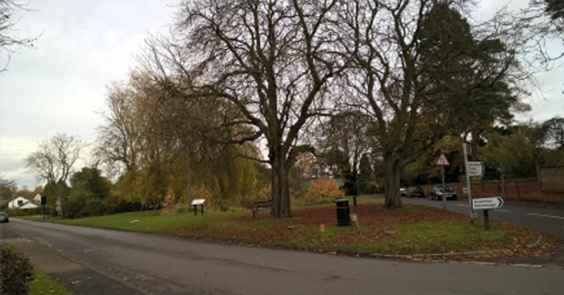
The village green in autumn. -

-
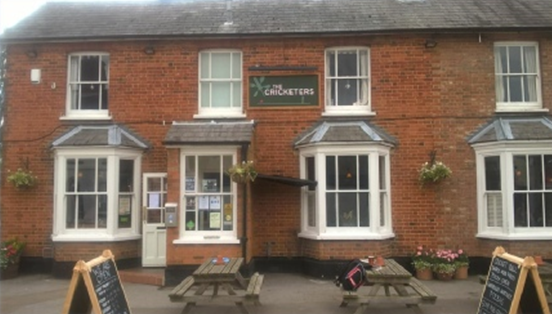
-

The churchyard at Holy Trinity also includes the final resting place of 19-year-old William Moles who was hung in 1817 near Halls Green for setting fire to a house, four barns, four outhouses, one stack of corn and two stacks of hay. The execution drew huge crowds and was reported in The Times. The originally cruciform 12th century Holy Trinity Church, which stands on high ground to the south-east of the village, was enlarged in the 15th and 18th century and has been much changed over the years. The north transept is the oldest part having been constructed in Norman times. Inscriptions on the six bells in the church tower date them as being 300 years old. Holy Trinity’s antiquity is self-evident and it’s well worth stopping off for a short visit.
The church would probably be at the heart of the village today were it not for the Black Death of 1348. The plague, which killed around half the population of England, swept through Weston with such virulence that buildings were burned down to prevent it spreading. The new village grew up around what is now Fore Street.
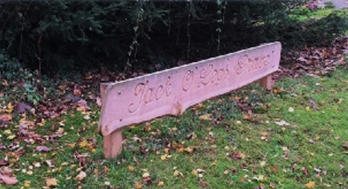
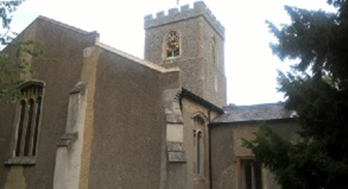

If you choose to miss out Weston and walk on to the church then, from that curving drive in Maiden Street, look out for the tell-tale Hertfordshire Way roundel by the drive and then go through several kissing gates until a path leads into the churchyard of Holy Trinity. Immediately on entering the churchyard turn right unless you aim to visit the church. (The “grave” of Jack O’Legs is by the main gate through the churchyard.) On turning right continue to a signed footpath on your left. Avoid the first path which veers left into Weston Park but away from the official route. The second correct route sends you across an open field on to the Weston Park estate (below).

It’s not too difficult to drift off course crossing the parkland (with its lakes and ponds largely hidden in woods to the left). Keep the woods to your left. You should soon find a driveway which you cross bearing left towards a metal fence where a kissing gate leads you on to a drive. Head for the wood on your left and keep it on your left as it bends round in that direction until a series of kissing gates – I found the path here hard to identify and the route ahead was a bit hit-and-miss – leads you across parkland where in the far corner and where the treeline becomes hedges find a gate and then walk to another 20 yards away next to a farm gate on a sharp bend alongside the entrance to Warrens Green farm. Head straight on along Warrensgreen Lane until it bends right where a track joins the road. When the road shortly bends left a track ahead leads you alongside woodland on your right and through two fields to emerge at a pond in the grounds of Tile Kiln Farm. Turn right through the farm buildings on a track and then turn left into Back Lane. Walk for just over a quarter of a mile and identify the start of a wood on your right. When the wood ends just after a bend in the road a track on your right leads you around the perimeter of two fields until you reach Back Lane again at the entrance to yet another Manor Farm. On the left are the ruins of St Etheldreda Church (below) which was once at the heart of the now disappeared village of Chesfield. Turn left into the road and then at a T-junction right into Back Lane.

At the second sharp bend a clear track in front of you gives access to a large field (below left). Stick to the right of the woodland until it peters out and becomes a hedge. Here is a good photo opportunity, the spire of St Nicholas Church on the edge of Stevenage dominating the skyline (below right). After 100 yards a sign sends you right across a large field heading towards a line of trees. Pay attention here as the sign when I passed was difficult to spot. When you reach a hedge blocking your path turn right and follow the track until you emerge – where else – in Back Lane near some houses. Turn left passing Church Lane and then bear right in front of St Mary’s Church. (If you want to visit Graveley and its High Street and pubs walk along Church Lane).
The village of Graveley grew up around what used to be known as the Great North Road coaching route between London, York and Edinburgh, mirrored in the names of the Waggon and Horses inn and the off-route pub The Highwayman at Jacks Hill. There are a number of attractive cottages and houses including the 18th century Grange and Gothic House and the George and Dragon pub on the main road with its striking 18th century façade of chequered brick. Nearby is the site of the former village of Chesfield – a possible site of a deserted medieval settlement – on rising ground to the east of the village. All that remains are the ruined walls of the 14th century church of St Etheldreda. The existing parish church (below) of St Mary’s dates back to around the 12th century with its 15th century bell tower supporting six bells.
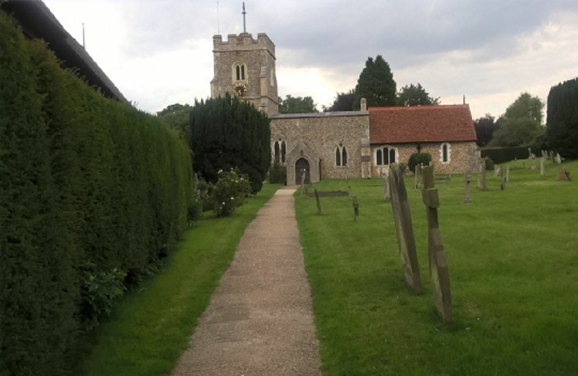
After passing the church you approach a collection of private farm buildings. At the bottom of an obvious track joining the road from the right is a Hertfordshire Way sign directing you to a modest track opposite which skirts the yard, crosses a ditch and heads inexorably on a well established track past a grass airstrip and continuing for a third of a mile, keeping left, to steps which take you down to High Street, the B197, where there isn’t a pavement! So plan your charge to the pavement opposite, turn right and then go under the A1 (M) to join a track immediately on your right. After 400 yards you’ll approach an obvious wood with a clear permissive path heading off left alongside a mature plantation (picture below). If you want to reach Willian continue straight on. See bottom of page. Follow the permissive path for half a mile to the narrow, enclosed and unpaved Willian Road. Turn left and walk into the village of Great Wymondley and aim for the Green Man pub.
The road is quite heavily used so if you’re anxious to err on the side of caution locate a waymark post shortly before you reach Willian Road which will send you left across a field and onto a football pitch. Turn right into Graveley Road and left to the Green Man.
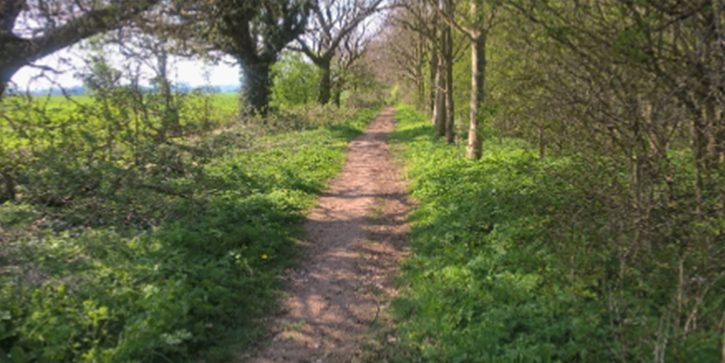

The church has an apsidal chancel – in the form of an apse – one of only three in the county. Ironically Great Wymondley is much smaller than its neighbouring near namesake Little Wymondley but can claim to have remains of earthworks of a former motte-and-bailey castle near the church, the Elizabethan Delamere House – the former home of Cardinal Wolsey – and a row of thatched cottages each named after one of Henry VIII’s wives.
Pass through the churchyard and at the impressive lych gate locate a clear path which heads diagonally left (below left) to a clump of trees in a corner of a field where a fetid looking pond and a kissing gate leads you into another field. The track unmistakably continues through a hedge to reach a relatively young plantation of regimented trees (below right). When you reach Priory Lane, turn right and walk under the often crushingly noisy East Coast London to Edinburgh line to the crossroads at the Plume of Feathers pub (bottom left). Cross over and walk the 60 yards to the Bucks Head (bottom right).
Now call it a day and stop off at one of the pubs – you’ve been spoilt for choice during the last 12 miles (albeit involving small detours) – and reflect on what I’d argue was a “proper” cross country trek. Ask yourself how many people did I meet en route? I’d think very few, if any. Excluding, perhaps, Weston and Graveley – if you ventured off route – and a late in the day acquaintance with the folksy ‘hubbub’ of Great/Little Wymondley when a cursory “afternoon” nod will be acceptable recognition.
Leg 2 is largely a solitary ramble with wildlife your only companion. And is all the better for that. This is one of the many legs when you can appreciate that Hertfordshire can be picturesquely ‘empty’ with the farmer, the landowner and historic by-ways dictating what you see, where you can go and what you experience. In all a placid day’s walking. You’ll always remember this section. And rightly so.
Next. Leg 3. Little Wymondley to Codicote. Scenic and sociable with sustained surprises.
Leg 2 Route Change
If you want to visit Great and Little Wymondley at the start of Leg 3 instead of at the end of Leg 2 by ending the day at Willian simply keep walking where the official route turns left on to the permissive path. When you reach Wymondley Road turn right and celebrate your arrival at the magnificent village pond (below.) The Fox pub is the white building in the background. Interestingly, just as you enter Willian, you pass another Manor Farm. So, for want of a better literary pun, the day’s trek has been bookended by Manor Farms (with another one alongside the ruins of St Etheldreda thrown in for good measure). Which poses an intriguing question? Is the name Manor Farm an historic and popular choice among landowners? Or have a lot of farmers in the county read Animal Farm? I’d like to think it is the latter though I suspect any such claims would be pure fiction.
The Fox Inn, Willian Road, Willian www.foxatwillian.co.uk The Three Horseshoes, Willian Lane, Willian www.thethreehorseshoesatwillian.co.uk